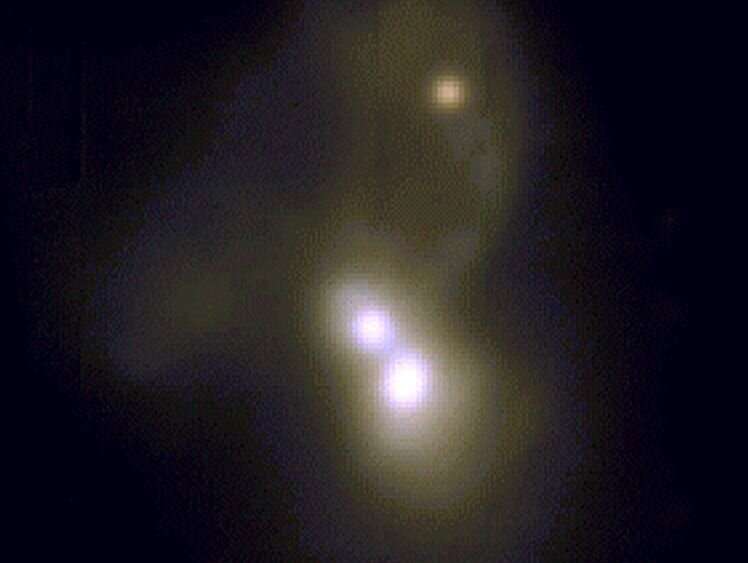Rare triple galaxy merger with at least two supermassive black holes

One of the best things about that universe is that there is so much to it. If you look hard enough, you can most likely find any combination of astronomical events happening. Not long ago, we reported on research that found seven separate instances of three galaxies colliding with one another. Now, a team led by Jonathan Williams of the University of Maryland has found another triple galaxy merging cluster, but this one might potentially have two active supermassive black holes, allowing astronomers to peer into the system dynamics of two of the universe's most extreme objects running into one another.
To find this unique system, Mr. Williams looked at data from a wide variety of sources, including the Very Large Array, European Southern Observatory, W. M. Keck Observatory, Chandra X-ray Observatory, and the Atacama Large Millimeter / Submillimeter Array. Sifting through all of that data, he found the system in an extremely bright patch of the sky about 800 million light-years away.
The three galaxies differ from one another in a variety of ways. One galaxy is known as a Seyfert type—large swirling disks which are known to have supermassive black holes at the center. Another of the galaxies is known as a "low-ionization nuclear emission-line region," or LINER galaxy, which some scientists speculate also contain supermassive black holes at their center, but this has yet to be incontrovertibly proven.
Not to be outdone by its larger neighbors, the third galaxy—a dwarf galaxy with no active supermassive black hole—is leaving a trail of dust behind it and seems to be traveling perpendicularly to the Earth. This combination of factors allows data about the physical characteristics of the merger that would otherwise be undetectable.
Even with this wealth of data, there are still some confusing outcomes from it—both the Seyfert and LINER galaxies don't act purely in line with expectations of those two types of galaxies. Getting a better understanding of what the galaxies actually are and the physics around the merging process itself will require even more data. As such, Mr. Williams plans to collect additional data using Hubble to shed some more light on this already extraordinarily bright, and extraordinarily interesting, region of the sky.
More information: 2MASS 1631 : A Merging Galaxy Triple Hosting a Potential Dual AGN. aas.org/sites/default/files/20 … 38_Mon2_Williams.pdf
Provided by Universe Today





















